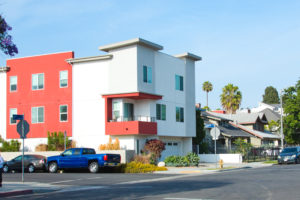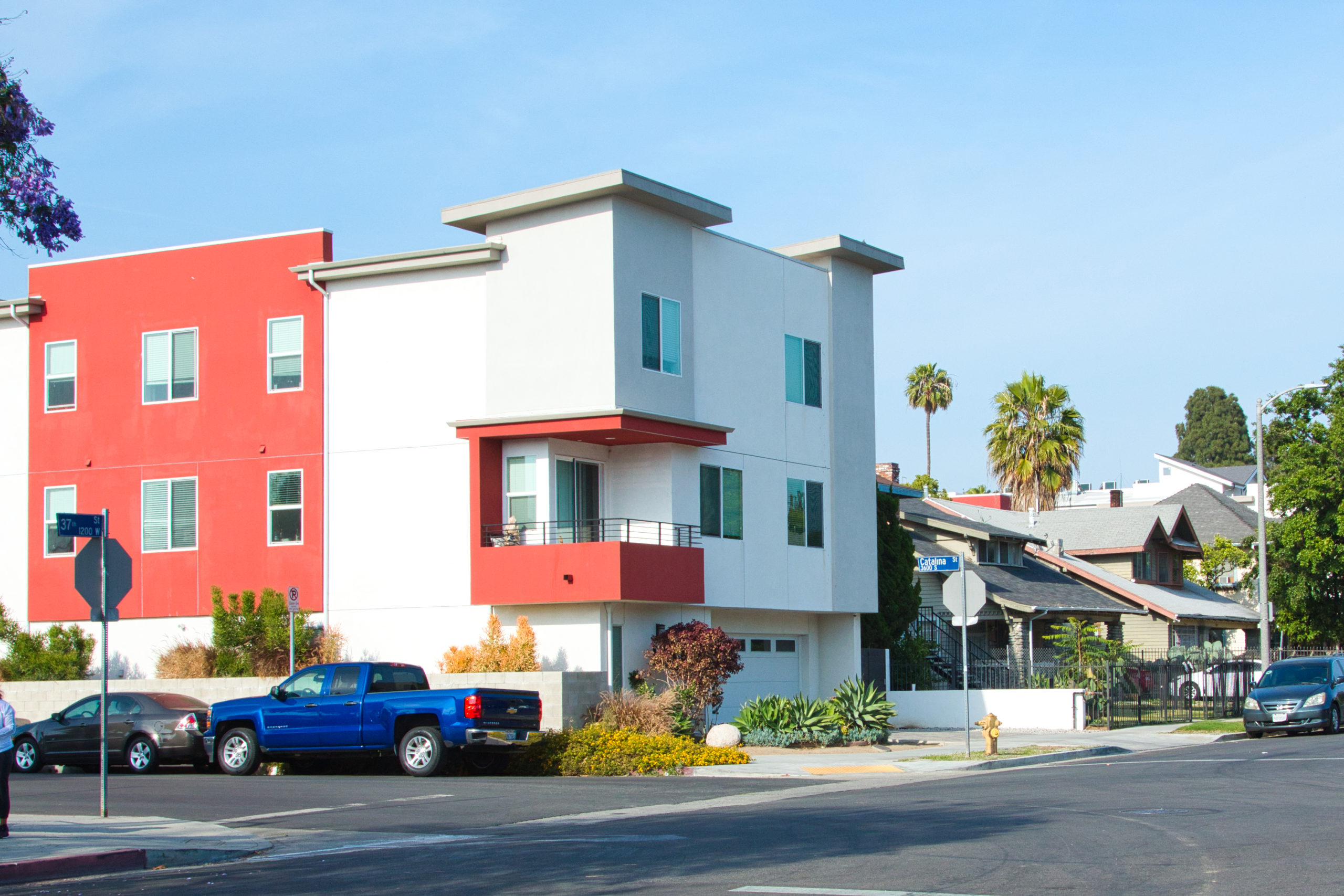
May 24, 2024
By Maria Patiño Gutierrez, Director of Policy and Advocacy, Equitable Development and Land Use
Earlier this month, SAJE, as part of the ACT-LA coalition, recommended the Los Angeles City Planning Department amend their draft Citywide Housing Incentive Program (CHIP) ordinance and draft Resident Protections Ordinance (RPO). Our recommendations included feedback we heard from SAJE members as well as attendees of our People’s Planning School public event on May 2.
The City Planning Department introduced the CHIP ordinance in March 2024 as a way to address Los Angeles’s housing affordability crisis. CHIP aims to address high rents, overcrowded units, and housing instability by creating more affordable housing throughout the city. The ordinance will amend the Los Angeles Municipal Code to streamline the development of affordable housing near transit and in areas with strong economic, environmental, and educational resources. The ordinance will also offer new financial incentives for this type of development.
Our coalition would like to see the CHIP ordinance be amended to incorporate requirements for deeper affordability. We would also like to see housing incentives to apply to more geographic areas, including neighborhoods with single-family zoning. Here are our recommendations around these two issues:
Require 2:1 Replacement of Demolished LARSO Units
CHIP’s incentives for affordable housing development currently require a 1:1 replacement of rent-stabilized (LARSO) units. But the city cannot accelerate affordable housing production by allowing developers to demolish existing LARSO units and not replace them with more LARSO units. For every rent-stabilized unit developers demolish, they should have to build at least two more units that are LARSO-protected. This will help increase the amount of rent-stabilized housing in Los Angeles and prevent the displacement of lower-income tenants.
Replacement LARSO Units Should Be Counted in Addition to Affordable Set-Aside Requirements
Los Angeles not only requires just a 1:1 replacement of affordable units, but also it allows developers to count replacement units toward their mandatory affordable housing set-aside. This hinders the city’s ability to create more new affordable housing: if a developer demolishes a 4-unit rent-stabilized building to create a 40-unit building with a 10% affordability requirement, then the developer only needs to build back four units of affordable housing—the same amount as they demolished. This adjustment to the set-aside requirement rules will also help steer developers away from sites occupied by renters.
Encourage Deeply Affordable Units by Adding Acutely Low-Income Incentives
The Transit Oriented Incentive program, which incentivizes affordable housing development near public transit, has created thousands of units affordable to households at 30% area median income (AMI) and below. But these units are still out of reach to many of the city’s poorest residents; nearly a third of Los Angeles renters earn incomes at or below 30% AMI. The CHIP should incentivize Acutely Low-Income units for households making 15% AMI to encourage the development of housing for our most vulnerable residents.
Similarly, the Opportunity Corridor Transition Incentive Area affordability requirements should be adjusted to remove the Moderate-Income options and encourage the highest feasible rates of Acutely Low-Income, Extremely Low-Income, and Very Low-Income units. These deeper affordability levels are particularly appropriate on corridors served by bus transit—based on the latest LA Metro Customer Experience Survey, four in ten bus riders live in households earning less than $15,000 annually, and 83% of riders live in households earning less than $49,000.
Incentivize Transit-Oriented Development near Single-Family Zoned Parcels
Excluding single-family zoned parcels from CHIP incentives—even when they are adjacent to a transit stop or along a transit corridor—maintains exclusionary zoning practices, squeezing new affordable housing into the same few areas of the city, typically low-income renter neighborhoods. Spreading development throughout Los Angeles will not only bring affordable housing to historically exclusionary neighborhoods with lots of resources, it will mean fewer occupied apartment buildings in low-income neighborhoods will be demolished to make way for new projects.
Increase Affordability Requirements in Areas Experiencing Gentrification and Displacement Pressures
The draft CHIP ordinance assigns different affordability requirements to different market tiers, which are defined geographically as Community Plan Areas. But a Community Plan Area can have a lot of variability—levels of income and access to resources are not homogenous, especially in areas that are rapidly gentrifying. It would be better if the city enacted affordability requirements that are responsive to historic and current conditions in specific neighborhoods.
For example, if a developer plans to build in a “low-market” Community Plan Area but has chosen to situate the project in a gentrifying neighborhood, they should have to provide as many affordable units as would be required in a “high-market” area. The city can use risk analysis tools such as the forthcoming Displacement Analysis Risk Tool (DART) or factors such as evictions, tenant buyouts, Ellis Act withdrawals, and more to make determinations about which neighborhoods are at risk of gentrification.
Require Community Input before Approving Projects on Sites with Environmental Concerns
The draft CHIP ordinance requires developers complete a Phase I Environmental Site Assessment for their project in order to qualify for incentives. They must complete a Phase II assessment if they want to build on a site that is on an official toxic site list. But these lists are often incomplete, and solely relying on them could result in homes built on or near contaminated land. Communities can be a great resource for identifying formerly contaminated sites in neighborhoods. Longtime residents of Wilmington, for instance, know where oil drilling and refineries have operated in close proximity to their homes—they’ve seen them, smelled them, and suffered their health impacts. We recommend the CHIP require a public meeting for projects proposed in areas that score at the 80th percentile and above on CalEnviroScreen 4.0, so that the city can hear from community members about their concerns.
We hope that the Los Angeles City Planning Department incorporates these recommendations as they revise the draft CHIP ordinance. The Los Angeles City Council will review the ordinance in the Planning & Land Use Management Committee later this year. To stay involved, email info@saje.net to get plugged into our land use work.

